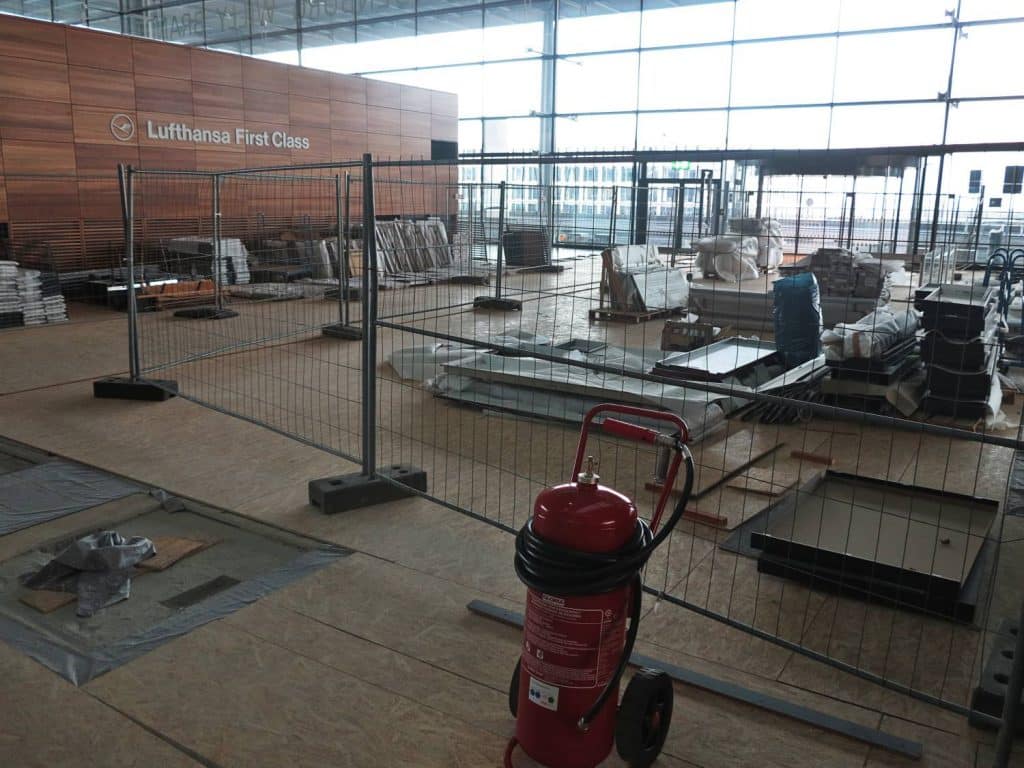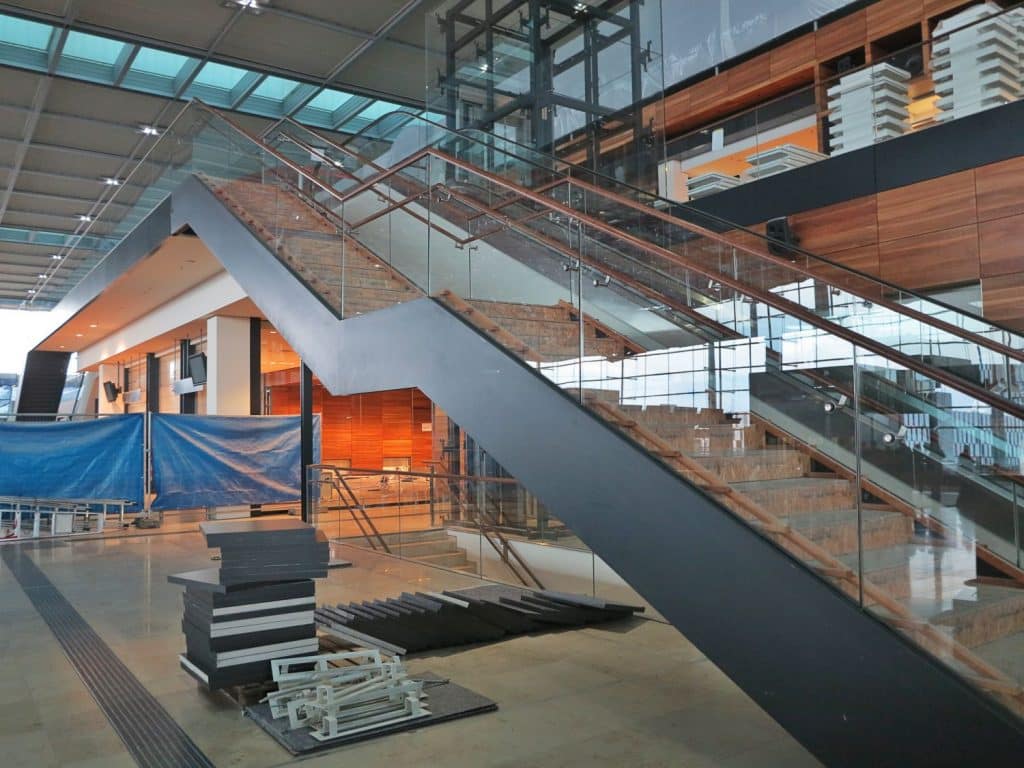The Berlin Brandenburg Airport is one of the largest construction projects ever undertaken in the eastern region of Germany. A combined effort between the Berlin state, the state of Brandenburg, and the German federal government, it is comical overdue its completion – almost ten years behind schedule.
As construction continues some 18 kilometres south of Berlin’s city centre, and the losses mount (with at least €1m bleeding away per day on a project currently more than €2.5bn over its initial budget) – we’ve gathered this photo gallery from a recent behind the scenes private guided tour of Berlin’s most problematic building site – the fiasco Flughafen.

After nearly 15 years of planning, construction work for the Berlin Brandenburg Airport (BER) finally began on 5th September 2006. It was initially intended to replace both Schönefeld and Tegel airport to become the single central airport for the German capital. Although a recent decision to keep the former operational was made due to rising passenger numbers. Combining the current Schoenefeld Airport with the unfinished Berlin Brandenburg Airport should eventually create the third largest airport in Germany (behind Frankfurt and Munich) with the capacity for an annual passenger turnover of more than 29 million.

Germanwings, easyJet and Ryanair are expected to become the leading carriers at the airport, that will bear the name of former West Berlin mayor and Nobel laureate, Willy Brandt. The German capital’s namesake carrier – Air Berlin – will no longer join this roster of airlines following the company’s collapse in 2017.

The main terminal building is as close to completion as it ever has been, with an agreeable mixture of wood panelling, glass and steel throughout the entrance, complemented by a deep crimson colour scheme and elements said to reflect regional style, from Prussian architect Karl Friedrich Schinkel’s work to Bauhaus design.

The project has been plagued by design flaws, bureaucratic disarray, conflicts with nearby residents and issues over flight plans since its inception. To make way for the new airport, two villages in the surrounding area were removed. The inhabitants of Diepensee, for instance, received compensation and were offered new homes in nearby Königs Wusterhausen.

The principal factor causing the delayed opening has been the fire protection and alarm system. Inspectors uncovered flaws in the wiring and implemention of a custom system designed by Siemens and Bosch. An ORAT (Operations Readiness and Airport Transfer) team brought in to test the system in 2011, generic glucophage before the first scheduled opening, found 55 miles of tangled wires, with high-voltage powerlines running alongside data cables and heating transfers.
In case of fire, the inspectors found the emergency ventilation system was just as likely to explode as it was to function, and the installed alarms had a peculiar tendency to register ghost readings, indicating fires in different parts of the buildings. The following year, the authorities overseeing the airport project proposed a temporary solution, to open the site and make it operational before a general overhaul could be completed: 800 low paid workers would patrol the airport with mobile phones and act as fire-spotters. The plan never came to fruition.

The original Schönefeld airport was opened in 1934, and used by the firm Henschel (later to become the sole manufacturer of Tiger I and Tiger II tanks in Nazi Germany) as part of an aircraft manufacturing plant. At the end of WW2, Soviet forces occupied the air strip and, in 1946, established the headquarters of the Soviet Air Forces in East Germany at Schönefeld.
As the civilian airport of the East German capital, it was the base of operations for Interflug. Russian airline Aeroflot also maintained a significant presence. When the new airport is complete, the air transport wing of the German Defence Ministry (Flugbereitschaft), will move to BER from its current base at Cologne-Bonn Airport.

In November 2016, it was revealed that the construction companies involved in the airport project had been offered financial incentives to complete work on the buildings in time for the new scheduled opening in mid-2017. According to German newspaper Tagesspiegel, the potential bonuses could add up to around €10 million per company but will only be paid if the work is complete by July 2017.

More information
Berlin Brandenberg International Airport
Bloomberg: How Berlin’s Futuristic Airport Became A $6 Billion Embarrasment
USA Today: Berlin’s new airport? It now won’t open until late 2017
The Local: Berlin Airport Hopes To Speed Opening With Cash Bonuses
Air Transport World: Berlin Brandenburg airport ‘on track’; no opening date set
